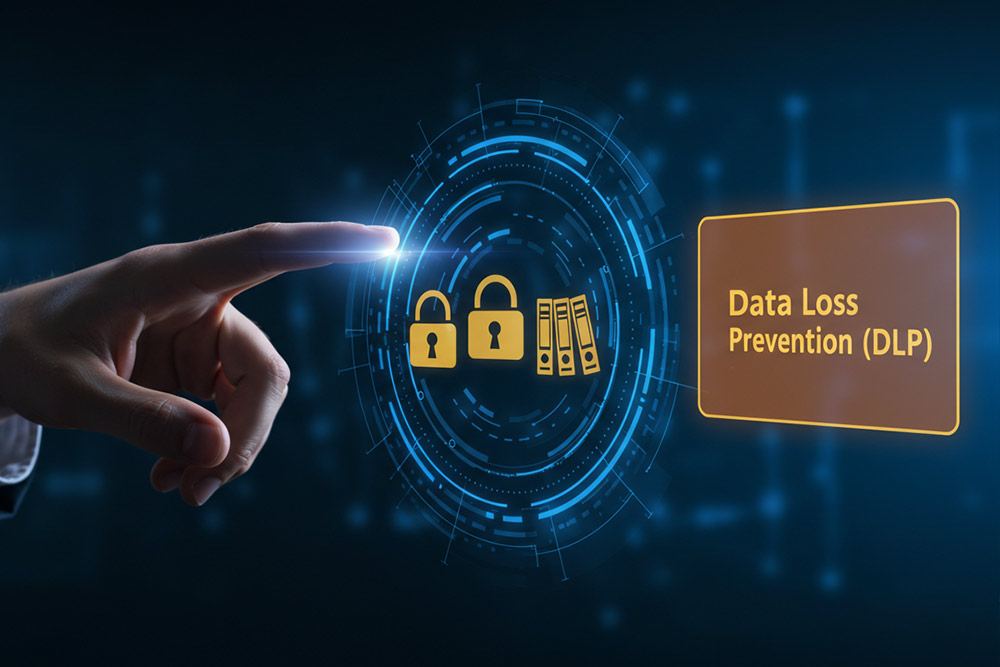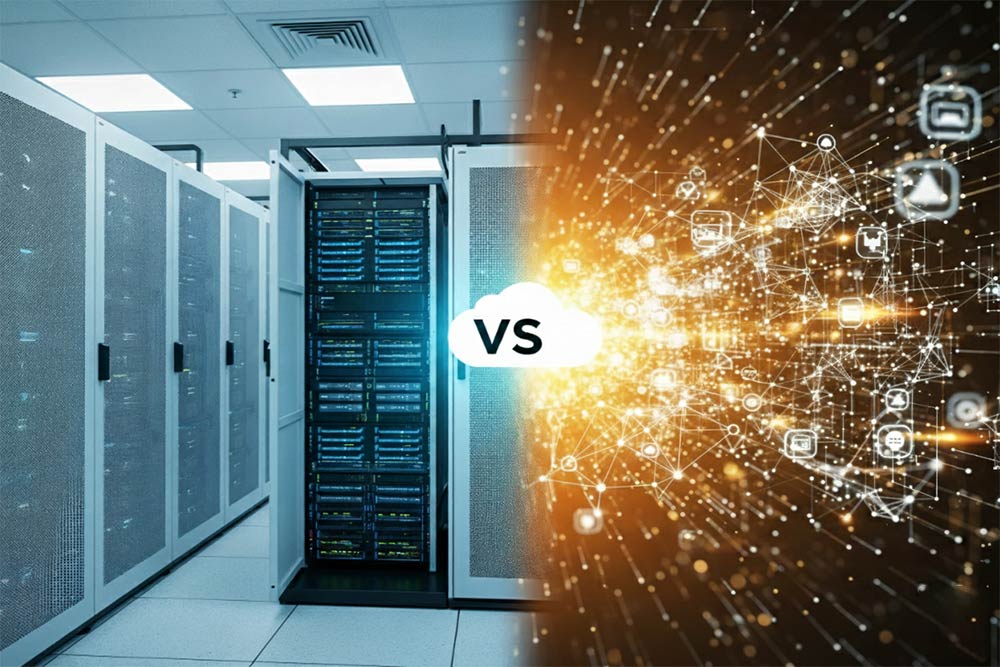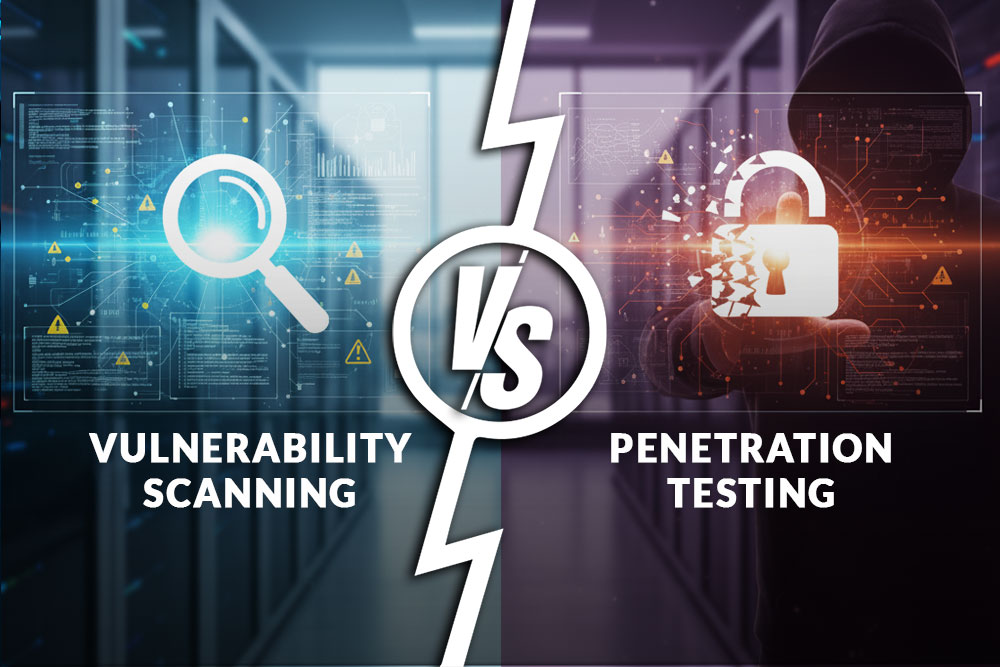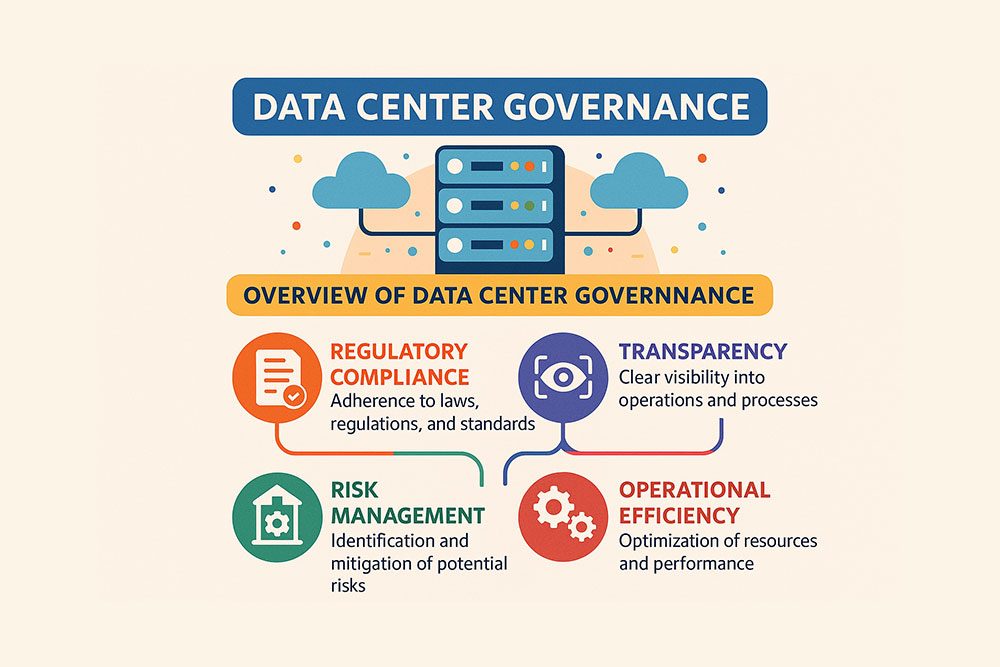Data loss prevention (or DLP) is a crucial set of measures for safeguarding an organization’s data from theft or loss. It uses cybersecurity strategies, techniques, and technologies to protect information and is a fundamental element in today’s cybersecurity strategies. With threats becoming more dangerous and agile each day, organizations need reliable and robust data loss prevention strategies and practices to ensure that hackers can’t access and exploit their sensitive data.
As cyber threats become more sophisticated and the cost of data breaches increases, companies need to be ready to shield against threats and prevent data leaks. This blog is going to focus on data loss prevention, the most common threats to prepare for, and the best approaches organizations can take to secure their data.

What is DLP, or Data Loss Prevention?
Data loss prevention, data leak prevention, extrusion prevention, and information loss prevention all refer to the same thing. DLP encompasses a set of actions that are designed to protect critical data from threats, misuse, loss, or unauthorized access. DLP is often incorporated into an organization’s comprehensive data security strategy. It does this by using various software, tools, and different measures.
DLP practices often include sorting out the different types of data within an object and implementing automated protection tactics. The main purpose of DLP is to protect intellectual property, maintain compliance, and protect data from the siege of breaches.
Why is Data Loss Prevention Important?
Data loss prevention plays a crucial role in safeguarding information and ensuring business continuity. Beyond these, DLP contributes to maintaining a good reputation and customer trust, ensuring regulatory compliance, and enhancing operational efficiency. As such, it’s critical for today’s businesses. Here’s why DLP is so important.
Averting Data Breaches
At the heart of DLP is the protection of sensitive data like personal information, financial records and intellectual property. This data is invaluable, and its damage or loss can have severe consequences. By implementing data loss prevention, organizations can more easily identify and impede attack attempts. Implementing DLP measures helps organizations to ensure that sensitive information is not exposed to unauthorized users. This contributes to maintaining privacy and adherence to regulation while protecting the company against the reputational damage a data breach can cause as well.
Regulatory Compliance
In many industries, companies are required to adhere to the strict regulations governing the handling and protection of data. Laws like the Health Insurance Portability and Accountability Act (HIPAA) impose stringent requirements on how organizations manage personal data, and failing to comply can result in significant fines and penalties. DLP helps organizations meet these regulatory requirements by monitoring and controlling data flows. Ensuring that sensitive data is handled in compliance with relevant laws is an essential part of data management and a robust data security strategy.
Preventing Financial Loss
Data breaches can lead to substantial financial losses. There are direct costs, like legal fees, regulatory fines, and remediation costs, as well as indirect costs, like reputational damage. According to Statista, the cost of a data breach was $9.36 million U.S. dollars in 2024, almost double the price in 2014. An effective data loss prevention strategy can significantly reduce this risk.
Safeguarding Reputation
Data breaches can significantly damage an organization’s rep, which can lead to a loss of trust, partners, and stakeholders. Reputation is, in the end, one of the most valuable assets of an organization. DLP can help maintain trust by guaranteeing that sensitive information is kept safe and protected against unauthorized access and leaks. This is particularly important today when news of data breaches spreads fast and can have a long-lasting impact on a company’s public image.
Preventing Insider Threats
Employees, contractors, and business partners often have access to sensitive information, and their actions – whether intentional or accidental – can lead to data loss. Data loss prevention solutions provide visibility into the activities of insiders and can detect and prevent unauthorized actions that could result in data loss. This is crucial for protecting valuable information from being misused or exposed by those within the organization.
Operational Efficiency and Business Continuity
DLP solutions not only protect data but also streamline data management processes. Automation and monitoring tools can reduce the workload on IT and security teams. Moreover, DLP solutions can help identify inefficiencies and vulnerabilities in data handling processes, improving them.
Data breaches can cause downtime, disrupting business operations, which leads to unproductive periods and revenue loss. DLP solutions can help ensure business continuity and assist in the process of recovery to minimize downtime.
The Most Common Threats to Data Safety
Threats can take many forms, and with new technological tools appearing, the risks to data safety are becoming more and more significant. These are the most common threats organizations should prepare for.
- Cyber-infiltration. Hackers aiming to exploit vulnerabilities often initiate cyber attacks with the aim of gaining access to a company’s sensitive information. These infiltrations can lead to data theft, manipulation, or destruction.
- Malicious software. Hackers often use malware – software designed to harm or exploit systems – to gain unauthorized access, steal information, and disrupt operations. These can be viruses, trojans, spyware, or worms.
- Insider sabotage. Threats don’t always come from the outside. They can come from the least expected places, like the inside of an organization. Whether with malicious intent or just plain carelessness, employees’ actions can become security threats. Workers can expose company data, or, in worse cases, they can misuse their access to the information in order to sabotage the company.
- Accidental data exposure. Unintentional exposure happens when data is accidentally made accessible to unauthorized entities, often due to human error or misconfigured security settings.
- Phishing scams. Phishing scams use emailing or messaging platforms for deceptive communication, aiming to trick people into revealing sensitive information like passwords or financial details like credit card numbers.
- Ransomware extortion. Ransomware is a type of malware that encrypts an organization’s data and demands a ransom for the decryption key. Ransomware attacks can lead to significant operational disruptions and data loss.
- Data leaks. Weak security measures can often lead to the unauthorized release of sensitive information, which can result in misuse and identity theft implications.

What’s the Best Approach to Data Loss Prevention?
A comprehensive data loss prevention solution has a few essential steps, each serving a specific role. Built one upon the other, these steps make up an efficient approach to data loss prevention. Here are the most critical stages.
Categorizing and Identifying Data
Start by classifying data based on sensitivity and importance. Identify where sensitive data is stored, processed, and transmitted. Use automated tools for classification and ensure consistent labeling.
Monitoring
Implement continuous monitoring to track data movement across networks, endpoints, and cloud environments to detect threats. Use technologies like intrusion detection systems (IDS) and DAM (data activity monitoring). Deploy DLP solutions that provide real-time alerts for any suspicious activity or policy violations.
Data Protection Measures
Enforce robust security policies like encryption, access controls, and endpoint protection. Regularly update and patch systems to reduce vulnerabilities. Restrict data access only to authorized individuals to reduce the risk of data breaches. Additionally, implement data masking and tokenization to safeguard sensitive information.
Incident Response and Disaster Recovery Planning
Develop a detailed incident response plan that outlines the procedures for detecting, reporting, and mitigating data breaches. Complement incident response planning with disaster recovery measures. Incident response handles immediate threats, while disaster recovery ensures data restoration and business continuity after major disruptions. Together, they provide a comprehensive approach to protecting and recovering sensitive data.
Conclusion
It’s instinctual to think that bad things can’t happen to us, only to other people. It’s how we establish a distance between us and the unpleasant thing. Relying on our instincts when it comes to our data is, however, highly unreasonable. Data threats are lurking in every corner, and when we become a target is merely a matter of time. Because of this, implementing a data loss prevention solution is vital for organizations. The components of a comprehensive data protection strategy working together can improve an organization’s data security posture and lower the risk of becoming a breach victim in the future.
Learn more about how you can build a robust defense line to protect your organization from the long-lasting repercussions of data loss. Contact our team at Volico Data Centers to find out more.
Call (305) 735-8098 or contact us in chat.











